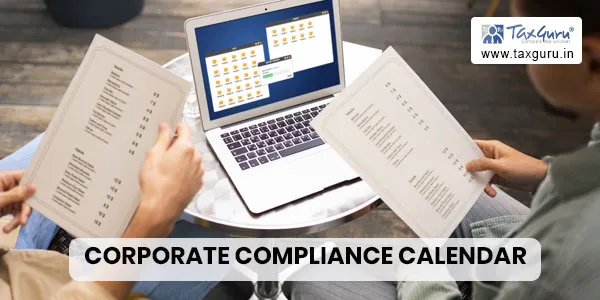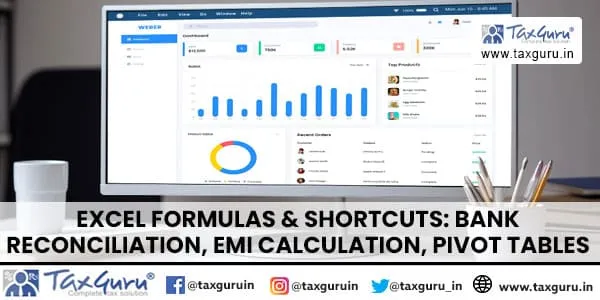Finally after a long waiting period GSTR-9C was been released and made available on GST portal on 14th April 2019 as a Tamil New Year gift to the nation.
Last date for filing GSTR-9C along with GSTR-9 is 30th June 2019, though words repeatedly used in relation to filing of GSTR-9 and GSTR-9C is “along with”, both the forms cannot be filed together. One can proceed for filing of GSTR 9C only after submitting GSTR-9.
Who needs to File GSTR-9C
There is a lot of confusion regarding applicability of GSTR-9C such as
1. Whether the limit of Rs.2 Crore is GSTN wise or PAN wise i.e. in case of branches in multiple state Rs.2 crore limit is to be considered for each state or for aggregate turnover of entire company
2. Whether 2 crore is to be calculated for the period 1.4.2017 to 31.3.2018 or from 01.07.2017 to 31.3.2018
3. Will the turnover declared in Profit & Loss account is to be considered to calculate Rs.2 crores limit or turnover as per GST is to be derived.
And many other such issues have formed a thick cloud to confusion in the minds of the assessee. We shall try to address few of these issues in this article.
What does the law states?
Section 35(5) talks about GST Audit i.e. GSTR-9C, Section 44 about Annual Return i.e GSTR-9 and Rule 80(3) prescribes the limit of turnover
Section 35(5) Every registered person whose turnover during a financial year exceeds the prescribed limit shall get his accounts audited by a chartered accountant or a cost accountant and shall submit a copy of the audited annual accounts, the reconciliation statement under sub-section (2) of section 44 and such other documents in such form and manner as may be prescribed.
Section 44 (1) Every registered person, other than an Input Service Distributor, a person paying tax under section 51 or section 52, a casual taxable person and a non-resident taxable person, shall furnish an annual return for every financial year electronically in such form and manner as may be prescribed on or before the thirty-first day of December following the end of such financial year.
(2) Every registered person who is required to get his accounts audited in accordance with the provisions of sub-section (5) of section 35 shall furnish, electronically, the annual return under sub-section (1) along with a copy of the audited annual accounts and a reconciliation statement, reconciling the value of supplies declared in the return furnished for the financial year with the audited annual financial statement, and such other particulars as may be prescribed.
Rule 80(3) Every registered person whose aggregate turnover during a financial year exceeds two crore rupees shall get his accounts audited as specified under sub-section (5) of section 35 and he shall furnish a copy of audited annual accounts and a reconciliation statement, duly certified, in FORM GSTR-9C, electronically through the common portal either directly or through a Facilitation Centre notified by the Commissioner.
What is to be considered Turnover or Aggregate Turnover
Section 35(5) states that ‘Every registered person whose turnover during a financial year exceeds the prescribed limit shall get his accounts audited ….’ The limit is prescribed in Rule 80(3)
However Rule 80(3) doesn’t use the word ‘turnover’ instead Rule 80(3) states ‘Every registered person whose aggregate turnover during a financial year exceeds two crore rupees shall get his accounts audited …’
As the word used is aggregate turnover and not turnover or turnover within the state, aggregate turnover of the assessee i.e. under a single PAN is to be considered for this purpose.
Hence for e.g. If Head office of the company registered in Chennai has Turnover of Rs.1.6 crores and branch registered at Bangalore has turnover of Rs.80 Lakhs, though individually in both the states turnover is not crossing the limit of Rs. 2 crores GST Audit would be applicable in both the states, as the aggregate turnover of the company is Rs. 2.4 crores. Hence GSTR-9C is to be filed in both the states.
Here the Rule is complimenting the section, as it is been stated in the section that turnover as may be prescribed and the same is been prescribed as aggregate turnover of Rs. 2 crores.
Period to be considered
Another issue is whether Rs. 2 crores is to be considered from April 2017 to March 2018 (12 months turnover) or from July 2017 to March 2018 (9 months turnover)
The concept of supply being taxable was applicable from 1st July 2017, in earlier regime it was sale being taxable and not supply. Further the turnover of that 3 months i.e from 1st April 2017 to 30th June 2017 is already been subject to VAT audit. Hence author is of the view that Rs. 2 crores is be considered for the turnover during 1st July 2017 to 31st March 2018.
Further, if we consider 9 months shall we proportionately take turnover as Rs.1.5 crores instead of Rs. 2 Crores
Answer is No, as nowhere in GST Act it is been mentioned that proportionate turnover is to be considered for calculation of any prescribed limit. Hence author is of the view that Rs. 2 Crores limit for 9 months is to be considered i.e. form 1st July 2017 to 31st March 2018.
Is turnover as per profit & loss account to be considered?
Let’s understand this with an example:-
A company’s turnover as per profit & loss account is Rs.1.5 crores. The company has head office registered at Mumbai and a branch at surat. Head office has transferred material worth Rs. 70 Lakhs to Surat branch, which is not been taken into consideration while preparation of Trading and Profit & Loss account.
As you can see the supply of goods from head office at Mumbai to Surat branch is a deemed supply viz a viz Schedule-I supply when you take this into consideration the aggregate turnover of the company is Rs.2.20 crores, GST audit is applicable.
So it is not the turnover as per Trading and Profit & Loss account which is to be considered but turnover with regard to supply as per GST Act is to be considered.
Hence, GSTN wise trial balance is highly recommended for preparation of Annual Return (GSTR-9) and GST Annual Audit (GSTR-9C) in an appropriate and time bound manner. However due date for both being same, we might expect another extension for GSTR-9C by the department.
The author can be reached at caidrismk@gmail.com
Disclaimer: the above views are based to authors understanding and interpretation of law, expert advice and user discretion is recommended prior to application of the content. Author is not liable for any penalty, fee, interest etc occurred due to application of the above opinions. The views, thoughts and opinions expressed in the text belong solely to the author, and not necessarily to the author’s organisation, committee or other group or individual.






















The article is very much helpful looking forward for more article like this thank you for sharing your knowledge
Very useful article
if my firm has a GST Items turnover of Rs. 50 Lakh during 1-7-2017 to 31-3-2018, and 200 Lakh for Non-GST Items, than our firm need to file GSTR9C or not.
Informative ……
Hi,
Is annual audit applicable for a foreign entity registered under GST as per the OIDAR requirements.
Feel repetition of information. This type of articles with relevant to the subject must have been posted much long back. Next, please improve the grammar and avoid simple grammatical blunders. This is my advice please.
The article is very helpful and looking forward for more article like this thank you for sharing your knowledge
Nice article.. keep it up bro..
The article is very helpful thank you for sharing knowledge and further more such helpful article expected in future
Thank you sir
That information was very helpful
Informative article..
Informative..